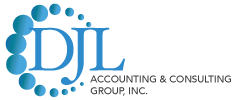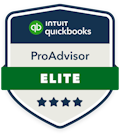PPP Loan Forgiveness: What Borrowers Can Do Now
Now that small businesses and organizations are starting to receive Paycheck Protection Program (PPP) funding, attention has turned to the next and most vital phase: loan forgiveness. If borrowed funds are spent as intended on payroll, mortgage interest, rent and utilities in the eight weeks after receipt, those expenditures are potentially eligible for complete, tax-free forgiveness.
The calculation of forgiveness amount contains regulatory ambiguities, so it is essential for borrowers to remain in constant communication with their lender throughout the covered period to ensure compliance with that specific bank’s interpretation and application of SBA PPP forgiveness guidance.
PPP loans offer a potential for the entire loan to be forgiven, tax-free. To be eligible for forgiveness, the loan proceeds must be used for:
• Payroll costs
• Payments of interest on any mortgage obligation that was incurred before February 15, 2020
• Any payment of rent under a leasing agreement in force before February 15, 2020
• Any utility payment for which service began before February 15, 2020
Payment specifically excluded from forgiveness includes the following:
• Cash compensation in excess of $100,000 for an individual employee or self-employment income of a partner in a partnership
• Compensation to an employee with a principal residence out of the United States
• Qualified sick or family leave wages under the Families First Coronavirus Response Act
• Prepayment for expenses
Loan forgiveness is predicated on how the loan proceeds are utilized over an eight-week period beginning on the date the lender makes the first disbursement of the loan. Once these funds are disbursed, in order to qualify for loan forgiveness, 75 percent of the loan amount must be spent on payroll costs. The remaining 25 percent may be utilized for mortgage interest, rent and certain utilities.
After an employer calculates its spending over the eight-week period, there are two more tests which may reduce the amount of loan forgiveness. First, we must compare the average full-time equivalent employees (FTEs) during the eight-week period to the average FTEs from February 15, 2019 through June 30, 2019, or January 1, 2020 through February 29, 2020, depending on seasonality. Then we must analyze whether there has been a more than 25 percent reduction in salary and/or wages for any individual employee from the eight-week covered period in comparison to pay during the first quarter of 2020. In order to truly understand the calculation behind this test, we will need a lot of further guidance. This calculation appears to be required for each employee.
Finally, based on the CARES Act, there is a provision for rehiring which may negate the impact of the above tests if:
• Elimination of the reduction from the FTEs retained test: Any reduction to FTEs was made from February 15, 2020 through April 26, 2020, and the FTE count was restored to February 15, 2020 levels on or before June 30, 2020; or
• Elimination of the reduction from the cash compensation reductions test: Any reduction to salaries or wages of one or more employees was made from February 15, 2020 through April 26, 2020, and the reduction was eliminated by June 30, 2020 to February 15, 2020 levels; or
• Elimination of the reductions from both tests: Rectify reductions in both FTEs and salaries/wages per the above.
Even with interim guidance to date, there are still many unanswered questions and ambiguity surrounding the forgiveness process.
Despite the outstanding questions, PPP loan recipients should put general ledger tracking mechanisms in place now and be ready to prove how the loan proceeds were spent.
Again, it is essential for borrowers to remain in constant communication with their lender throughout the covered period to ensure compliance with that specific bank’s interpretation and application of SBA PPP forgiveness guidance.
- Debra Rodway's blog
- Log in to post comments



